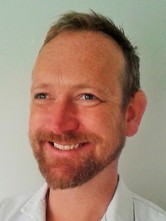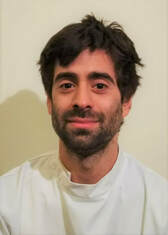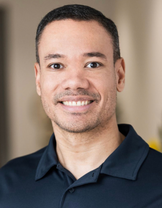Practice ethos
There are many forms of osteopathy and it can be a bit bewildering to a patient so we want to be upfront about the kind of treatment we do, and don't, currently provide. Our main emphasis is what is called 'Structural Osteopathy'. This is the best known form of osteopathy and concentrates on understanding the interplay of forces through joints muscles and soft-tissues. Treatment will aim to resolve local dysfunction using articulation (Movement of joints to gradually increase range of motion), soft-tissue work (forms of massage type treatment to muscles and other soft-tissues) and manipulation (very small but fast movements of a joint which may result in an audible pop or click). As osteopaths we are interested in why the dysfunction has occurred and will undertake a holistic review of the patient to address any asymmetries or imbalances, this will encompass more than just the musculoskeletal system and we may discuss any lifestyle factors which may contribute to your presentation.
Damian Moore M.Ost - He/Him

Damian qualified in 2014 from the British School of Osteopathy (now UCO), here in London. It is the oldest and the largest school in Europe and has an excellent reputation. He set up Vauxhall Village Osteopathy on graduation and Oval Osteopathy a little later and has worked for himself ever since. As well as the structural techniques listed above he is trained in and uses:-
Damian doesn't currently offer osteopathy concerned with involuntary motion (often called cranial osteopathy) or paediatric osteopathy
- Still Technique - this is a particular form of articulation which is not much practised outside the USA but is very powerful despite being very gentle and safe, it is particularly useful for patients who don't like being manipulated, or for whom manipulation is not suitable but he also uses it widely on ribs and the pelvis where it is more comfortable than manipulations and very effective.
- Functional Technique and Balanced Ligamentous Tension- these are two very gentle forms of treatment indeed but can be very effective. Rather than stretching out tissues or extending range of motion by pushing through any guarding that is restricting movement, functional and balanced ligamentous tension techniques looks for the 'point of ease', that is to say that he will support whatever tissue and by making small movements always in the direction that the tissue concerned is most comfortable. He will find the point where the tissues surrounding the area have the least tension through them. He can support the joint at this position and because of the lack of tension in the tissues they are able to relax.
Damian doesn't currently offer osteopathy concerned with involuntary motion (often called cranial osteopathy) or paediatric osteopathy
Adam Schamroth M.Ost - He/Him

Adam Schamroth is a General Osteopathic Council certified osteopath with a Masters of Osteopathy degree from the British School of Osteopathy in addition to Bsc in Environmental Sciences from the University of Manchester.
Having previously worked with both Chiropractors as well as Osteopaths he now specialises in postural correction and posture related conditions such as back, neck and shoulder pain.
He is skilled in a variety of techniques including spinal manipulations, joint articulation, medical acupuncture, kinesio taping and soft tissue techniques.
Originally from North London and now living in Dulwich he is a keen runner and swimmer. He is also a passionate skier and snowboarder as well as rock climbing and playing squash. With all this activity he is no stranger to sporting related injuries with experience both treating and being treated.
Adam has also previously volunteered his osteopathic skills at Stanmore orthopaedic hospital working with the Disability foundation, a registered charity providing complementary therapies for people living with disabilities.
Having previously worked with both Chiropractors as well as Osteopaths he now specialises in postural correction and posture related conditions such as back, neck and shoulder pain.
He is skilled in a variety of techniques including spinal manipulations, joint articulation, medical acupuncture, kinesio taping and soft tissue techniques.
Originally from North London and now living in Dulwich he is a keen runner and swimmer. He is also a passionate skier and snowboarder as well as rock climbing and playing squash. With all this activity he is no stranger to sporting related injuries with experience both treating and being treated.
Adam has also previously volunteered his osteopathic skills at Stanmore orthopaedic hospital working with the Disability foundation, a registered charity providing complementary therapies for people living with disabilities.
Eduardo Da Silva M.Ost - He/Him

Eduardo is the newest member of our team and currently only works out of oval.
Ed graduated master in osteopathy from the University College of Osteopathy, he is a native Brazilian Portuguese speaker and speaks fluent Spanish
He is a structural osteopath who believes in the importance of body movement for a better quality of life. He is interested in rehabilitation exercises and believes combining osteopathy with movement can benefit the patient’s recovery.
His passion for exercise guided him to understand the importance of movement for optimal body functioning. With an experience of almost ten years as a personal trainer, he also helps patients to improve their overall fitness to reduce risks of re-injuries and increase general fitness.
Outside the clinic, Ed trains clients privately and teaches BODYPUMP. His hobbies include bodybuilding, karate, ice skating and British Sign Language.
Ed graduated master in osteopathy from the University College of Osteopathy, he is a native Brazilian Portuguese speaker and speaks fluent Spanish
He is a structural osteopath who believes in the importance of body movement for a better quality of life. He is interested in rehabilitation exercises and believes combining osteopathy with movement can benefit the patient’s recovery.
His passion for exercise guided him to understand the importance of movement for optimal body functioning. With an experience of almost ten years as a personal trainer, he also helps patients to improve their overall fitness to reduce risks of re-injuries and increase general fitness.
Outside the clinic, Ed trains clients privately and teaches BODYPUMP. His hobbies include bodybuilding, karate, ice skating and British Sign Language.



